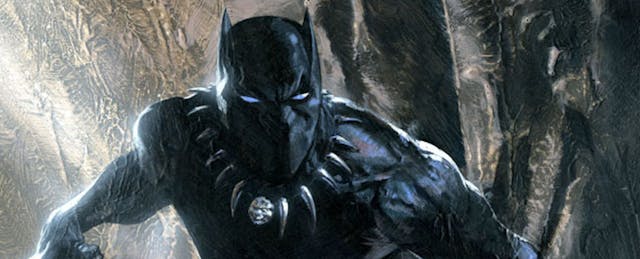I've never been much of a comic book reader. But I could not help but feel excited about the news of Marvel’s 11-issue revival of the Black Panther series, written by MacArthur Genius and National Book Award winner Ta-Nehisi Coates. The third issue was released last week, and a film is due out in 2017, directed by the award-winning Ryan Coogler. Debuting in 1966, Black Panther was the first black superhero in mainstream comic books; virtually no black heroes were created before him, and none with actual superpowers.
Hailing from the East African nation of Wakanda, Black Panther and his homeland are an example of a sub-genre of fiction in which Africans and African Americans display a prowess and understanding of technological and scientific advancement. Some consider this part of Afrofuturism, a creative practice that takes black thought and re-imagines themes in STEAM, science and speculative fiction, and fantasy.
STEAM not only fosters do-it-yourself or DIY practices involving computers, electronics, and fabrication, but also a trans-disciplinary approach to artistic, cultural and academic production in digital media, and mutual concerns of the arts with STEM disciplines. By adding an “A” for Art to STEM, schools can engage a more diverse population of students who use the arts for creative expression, communication, and innovation.
Black Panther (T’Challa) and the Wakanda story provide culturally relevant themes that may be of interest to students from groups most underrepresented in STEM and STEAM. For example, in Marvel’s Secret Wars series, the universe has been destroyed, but, in the final moments of existence, various characters grab pieces of various realities and merge them together into a strange new universe. In Secret Wars #9, Black Panther meets with Wakandan scientists to develop a space program. In one panel, Black Panther/T’Challa beams with pride over the scientists’ development of stellar cartography and the discovery of another solar system. Readers see a rocket heading for outer space: the first step for humanity to live among the stars.

Underrepresented students who are passionate about art or making can feel excluded from STEM initiatives such as the Maker Movement or NASA’s Journey to Mars space program. Black Panther and Wakanda and other comic book subjects can be used to get these students' attention, then encourage them to dig deeper into academic subjects such as computer science and engineering. In Afrofuturism, students might find inspiration from American jazz composer and philosopher Sun Ra’s early work with the Outer Space Visual Communicator (OVC). The OVC was a giant machine played with hands and feet that allowed artists to create and finger-paint with light similar to how musicians create and explore sound with their conventional instruments.
Another inspiration for Afrofuturism and STEAM is W.E.B. Du Bois, a 20th century scholar who used speculative fiction to advocate for Pan-Africanism, including African self-determination, and the importance of building bridges within the African diaspora—the people of African descent scattered throughout the world. In his recently discovered story from 1905, Princess Steel, Du Bois writes about two technologies that are relevant to our time now. The first is a mechanism by which a human deed can be represented in two dimensions on a “thin transparent film.” Layering such films one on top of another produces a representation of the “history of these deeds in days and months and years.” Another device Du Bois describes in the story is the Megascope that, when worn on the head, transports the protagonist to another world. Du Bois wrote about virtual reality-like technologies from his imagined future of the 20th century more than a hundred years before the invention of Oculus Rift.
American author Samuel R. Delany noted that science fiction involves thinking about how the world might be for people, who, historically, have been oppressed (excluded, disenfranchised or marginalized). If they are going to change the world, he says, they have to think about a world that works differently. From fictional Wakandan science and computer technology that can create superheroes to real devices that change the way we experience music or see the physical world, Afrofuturism offers many examples—both fictional and nonfictional—of contributions from people less and/or more represented in STEM and STEAM.


